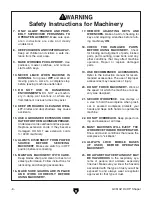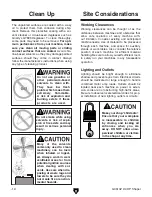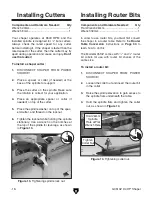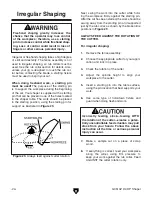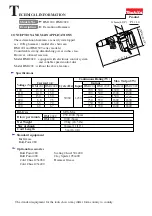
G0510Z 3⁄4 HP Shaper
-20-
Figure 18.
Fence adjustments.
Lock Handle
Adjustment Knob
Fence Adjustments
Each side of the fence is independently adjust-
able to compensate for different cutting thick-
nesses and special shaping applications. One
turn of the adjustment knob (
Figure 18
) moves
the split fence approximately
3
/
64
" (.040"). When
removing material from the whole face of your
workpiece, the outfeed fence should be adjusted
to the proper offset to provide support for the
workpiece as it passes over the cutter.
To adjust the fence for straight shaping:
1.
Loosen the lock handle (see
Figure 18
).
2.
Adjust the infeed fence so the cutter will
remove the desired amount of stock.
3.
A test piece can help determine the best
setting. Select the wood for the test piece
that most closely resembles your actual
workpiece.
4.
Lock the infeed fence in position with the
locking handle to prepare to make a test cut.
5.
Turn the shaper
ON
and
advance a 36" or
longer test sample of the desired cut about
8'', then stop. Swing the test piece away from
the cutter and turn the machine
OFF
.
6.
When the cutter comes to a complete stop,
adjust the outfeed fence to support the new
profiled edge. Lock the outfeed fence into
position and retest. See
Figure 19
and
Figure 20
for improper and proper outfeed
fence positioning.
The fence may not always be perfectly par-
allel to the miter slot; therefore, using the
miter gauge can cause binding and possible
kickback of the workpiece towards the oper-
ator. DO NOT use the miter gauge to feed
material along the fence face when straight
shaping. Use a push stick and hold-downs
to keep the workpiece in position.
Figure 19
. Improper fence adjustment.
Figure 20
. Proper fence adjustment.

